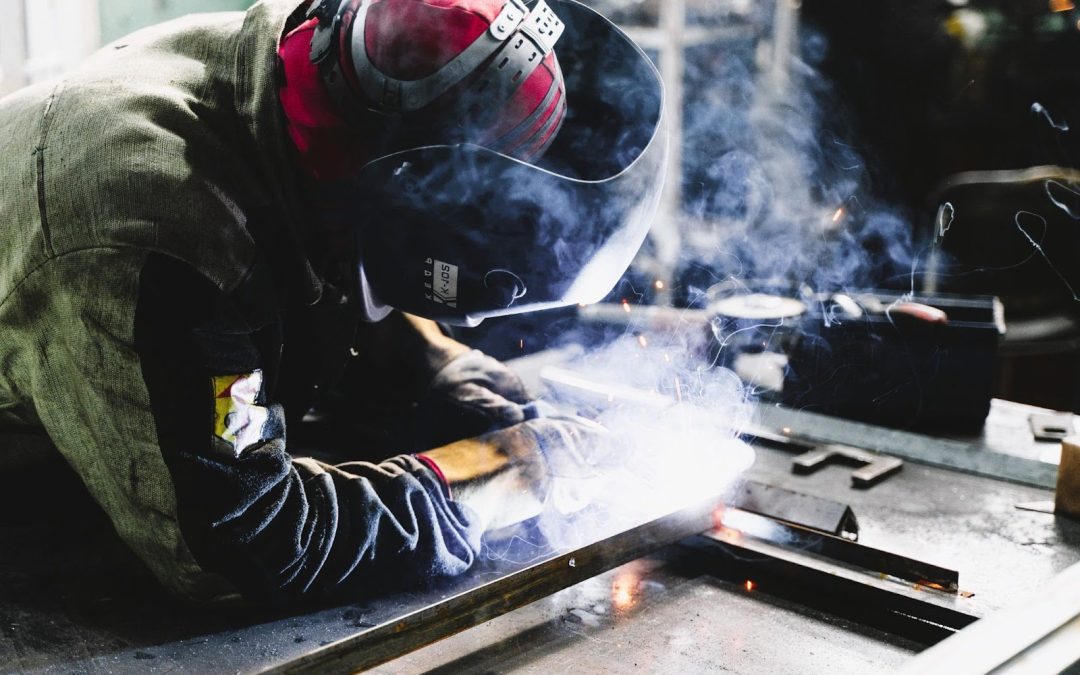Steel, an essential material in construction, manufacturing, and infrastructure, is created from a combination of metals and other elements. Depending on the proportions of these metals and the amount of iron present, construction steel can be categorised into various types, with mild and stainless steel being among the most popular. Each type has distinct properties that make it suitable for different applications. With Weldform Structures, we’ll delve into the key differences between mild and stainless steel, and explore how these two types can benefit your construction projects.
What is Mild Steel?
Mild steel is one of the most commonly used steel types in the market. It is a type of plain carbon steel with low carbon content, ranging from 0.05% to 0.25%. While it contains low traces of other chemical elements such as manganese or silicon, it has no other alloying elements besides carbon. Its relatively low carbon content allows it to be ductile, machinable, and weldable, making it a popular choice for signs, furniture, cars, structural steel, and fencing.
What is Stainless Steel?
Stainless steel is a type of steel alloy renowned for its high corrosion resistance, attributed to its high chromium content which often ranges from 10.5% to 20%. This element reacts with oxygen to form a passive chromium oxide coating on the steel’s surface, providing a protective layer against corrosion. This coating also has self-healing properties, allowing it to cover and fill any abrasions.
Mild vs Stainless Steel: What’s the Difference?
- Strength
With its high chromium content, stainless steel is generally stronger than mild steel, making it more suitable for certain construction projects. However, because of its harder composition, it is less malleable. On the other hand, while mild steel is more flexible, it can be strengthened by adding carbon. It’s also more heat resistant, making it a good option for household appliances or to carry chemicals.
- Corrosion
Stainless steel is highly corrosion-resistant due to its chromium content. Mild steel, however, lacks a protective layer and rusts rapidly. Protective coatings such as galvanising or painting can extend its lifespan.
- Ductility
This characteristic refers to a material’s ability to change shape permanently without breaking or cracking. In this aspect, mild steel takes the lead due to its low carbon content. It can easily shift shapes without breaking. That’s why it’s commonly used as construction steel for items like pipes and pipe fittings.
Stainless steel is harder to twist and deform, but its ductility can be enhanced with the addition of nickel.
- Weldability and Malleability
Malleable materials can be hammered or rolled into new shapes without breaking or cracking, and mild steel is one of them. It’s more flexible compared to stainless steel. These properties also make it an easier material to fabricate than stainless steel that requires high-technology machines and skilled technicians.
- Cleaning and Maintenance
Stainless steel is already resistant to corrosion and due to its smooth surface, dirt doesn’t stick, hence, it’s easier to clean. But, after a period of time, it would require polishing to retain its lustrous look. Mild steel, on the other hand, needs to be regularly repainted depending on how fast its paint peels or fades. Not doing so would expose it to the risk of rust, especially in extreme weather conditions.
- Applications
Because of mild steel’s better ductility and malleability, it is often used to make bolts, sheet piles, rivets, railway tracks, channels, rolled sections, and more in construction. As for stainless steel, contractors take advantage of its strength to create robust or heavy-duty industrial pieces of equipment or infrastructure parts. Stainless steel is also more resistant to fire and heat, making it a popular choice in the oil and gas processing industry.
- Cost
Stainless steel is generally more expensive than mild steel due to its higher quality. It’s also added with various alloying elements to ensure it’s corrosion-resistant, heat-treatable, and highly durable which increases the production costs significantly. On the other hand, mild steel is easier to produce and easier to work with, hence, the lower price point. Aside from those, however, factors like maintenance costs, longevity, and specific project requirements can all affect the costs of these two materials.
Which is Better: Mild Steel vs Stainless Steel
Ultimately, neither is inherently better; both have unique advantages. Stainless steel offers superior corrosion resistance and strength, while mild steel is more affordable and malleable. The choice depends on the specific requirements of your project.
At Weldform Structures, we are committed to providing top-quality steel for construction purposes. Our expertise in drafting, fabricating, and designing construction solutions ensures that your project is completed to the highest standards. If you want to learn more about our steel products and services, contact us today!

